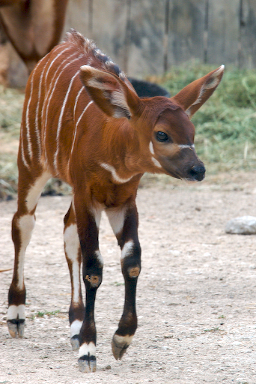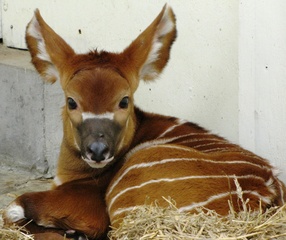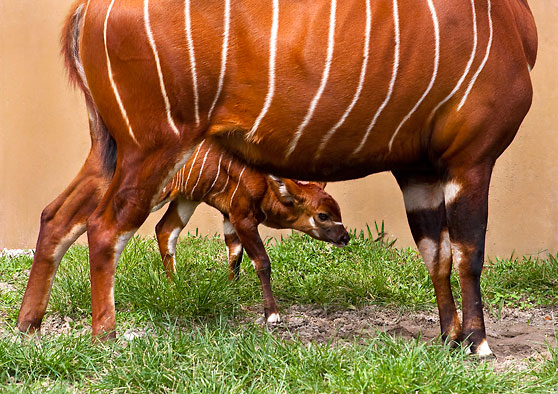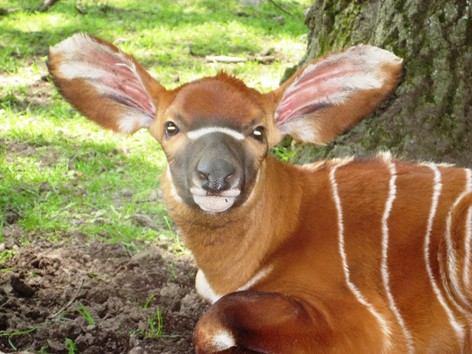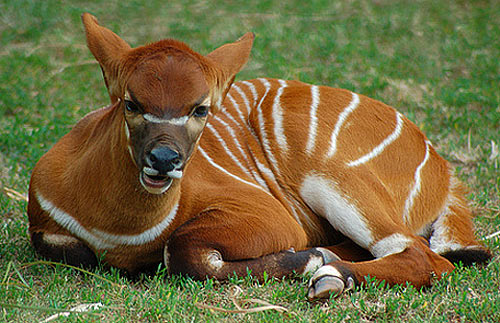Bongos: They’re Not Drums, They’re Antelope!
Known as one of the only species in which both males and females have horns, Bongos are a type of antelope known for their vibrant reddish-brown coat, black and white markings, white-yellow stripes, and long spiralled horns. They are also known for being very social, and for being the only species of forrest antelope to form heards. Bongos are primarily nocturnal and are herbivores who inhabit the dense jungles and forrests of African nations like Angola, Benin, Burkina Faso, Cameroon, Central African Republic, Congo, The Democratic Republic of Congo, Côte d’Ivoire, Equatorial Guinea, Ethiopia, Gabon, Ghana, Guinea, Guinea-Bissau, Kenya, Liberia, Mali, Niger, Sierra Leone, Sudan, Togo, and Uganda. When a bongo is first born, it is known as a calf, and is left in hiding by it’s mother, who only returns for short visits so that the baby bongo can suckle. Soon after, when the bongo is strong enough to defend itself and/or flee from danger, it will begin to accompany it’s mother and the other calves in a ‘nursery heard’. As a result of their inability to flee from some of their faster predators, and the relative ease with which a human can snare one, the bongo population has reached levels of near extinction. It is for this reason, that every bongo calf born (like Penelope; pictured above at the Houston ,U.S., Zoo) whether in captivity or in the wild, must be preserved and protected. With hard work, and a little luck, there’s hope that someday bongos will no longer be so scarce.

